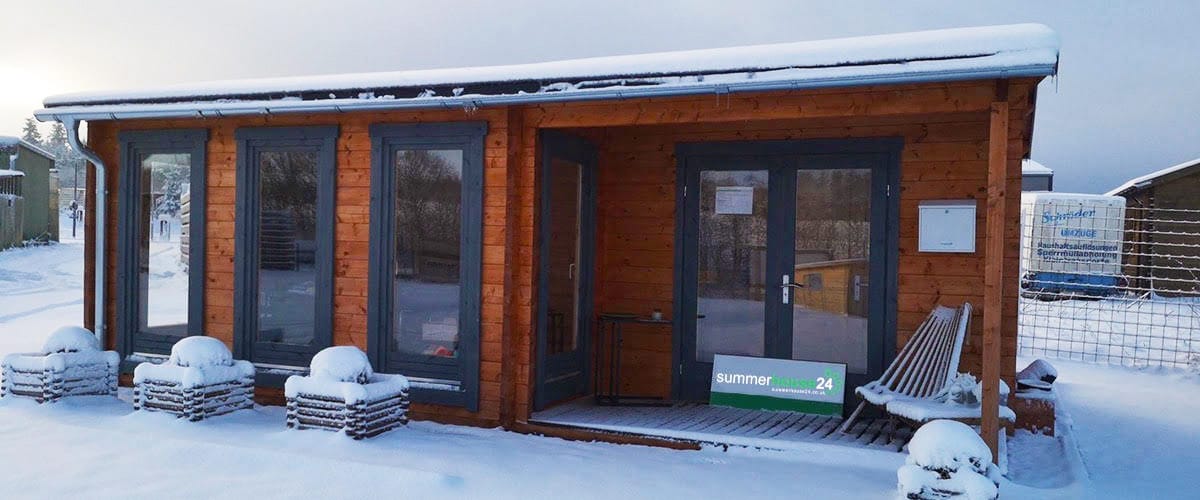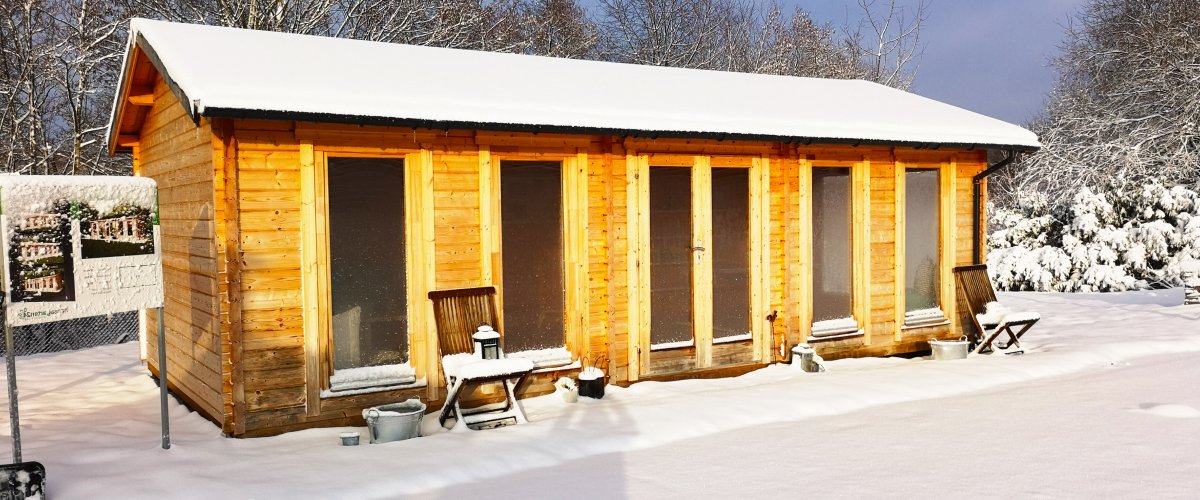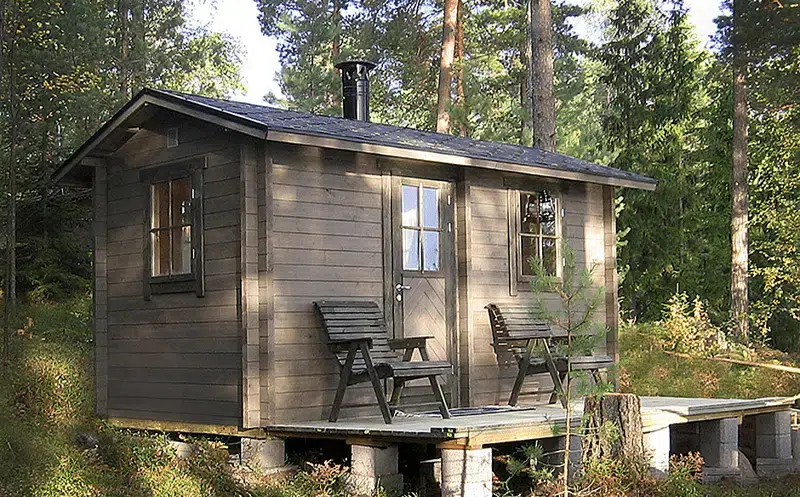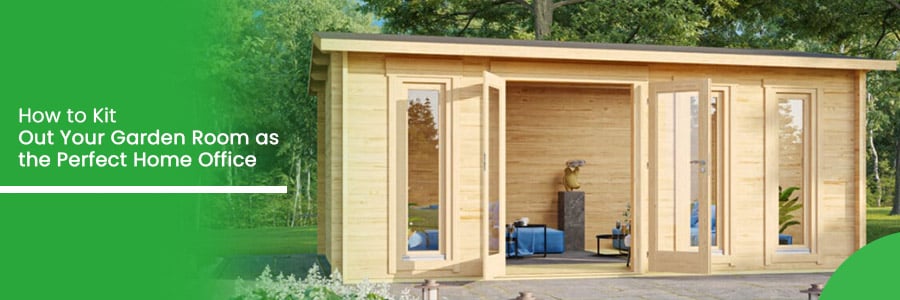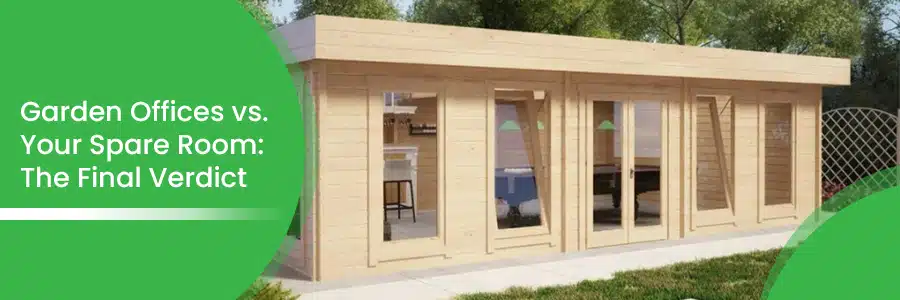How to Prepare Your Log Cabin Home for Winter
27.12.2021
Winter is right around the corner, and, as the cold weather is making its presence known, your log cabin will require some extra attention. The winter months can be delightful and the first snow is a much-awaited event, but it the increased levels of humidity and frost can also cause some problems.
If you haven’t had the chance to prepare your log cabin home for winter yet, you can still do it. As the saying goes “better late than never”, so let’s take a quick look at some of the things that you can do to keep your residential log cabin safe during the cold winter months. This is a quick and informative guide that will cover all the essential aspects of log cabin winter maintenance.
Keep reading to learn more about the damage that winter weather can do and how you can protect your log cabin home. And, although this guide is aimed at wooden residential log cabins and garden buildings, these tips can surely be used for kinds of similar structures such as sheds, wooden garages, carports, even playhouses and treehouses.
Most Common Types of Winter Weather Damage
Winter weather can wreak havoc on your garden and on sensitive structures such as wooden buildings that are not properly insulated or maintained. This is especially true when the temperatures drop below freezing, during winter storms and snow blizzards, and even in the case of very strong winds and prolonged periods of rainy weather. To prevent nature from causing irreparable damage to your wooden log cabin, it’s important to be informed and to know what to expect. So here are some of the most common types of damage that occur due to bad weather:
Frost Damage
When temperatures drop below zero and there are high levels of humidity due to rain or snow, you should be prepared for ice damage. Locks, windows, and hinges are quite susceptibly to this type of damage as materials tend to shrink or warp due to the low temperatures. It is also important to keep an eye out for ice dams, as these formations can cause injuries, but can also lead to water infiltrations.
Water Damage
Water damage is a common problem during the autumn and winter months. Seeping water and leaks can lead to rot and decay and can cause serious damage to any type of structure. In addition to that, water infiltrations can also freeze and cause more structural damage. If they are not properly protected, the wooden boards of your log cabin can get wet, warped, and can become brittle in time and become vulnerable to wind and other natural phenomena.
Accumulated Snow Damage
Snow that is left to its own devices tends to pile up and become extremely heavy, causing serious building damage. Melting snow is also problematic as it can easily lead to water damage, especially in buildings that aren’t properly waterproofed. In older buildings, accumulated snow and ice can cause the roof to collapse. Buildings that are in a bad shape have a higher risk of corrosion and structural integrity issues. But newer buildings, especially those that have flat roofs made of lightweight materials can also give in under the pressure of accumulated snow and ice. The best way to avoid snow build-ups is by opting for a sloped roof and by doing regular preventive building maintenance for your home and your log cabin.
How to Winterproof Your Residential Log Cabin?
So, it is safe to say that winter can be a difficult season for log cabins, but the good news is that preparing these versatile wooden structures for winter isn’t as difficult as it sounds. If you want to protect your log cabin from all the types of damage mentioned above, all you have to do is to follow a few easy steps.
Step 1 – Assess the situation
Before you get to work, it’s always best to have a well-formulated plan, so assessing the situation should be the first step. A quick survey during which you check your log cabin home thoroughly will help you figure out whether you’re dealing with any existing damage. Make sure you check the roof, the windows, the doors, and the base, and take note of all small problems as even the tiniest of cracks can lead to a serious problem in the long term. It is also recommended to do a complete and thorough inspection of your log cabin’s interior. It might be necessary to move some stuff around, but it is worth it because it will allow you to check for small cracks, leaks, mildew, and other problems that are easy to fix, but that can cause more serious damage in the long run.
Step 2 – Waterproof your log cabin
Waterproofing is a key step in protecting your log cabin home and ensuring that it won’t suffer damage during the winter months. By avoiding water infiltrations, you can prevent water damage, freeze damage, and rot. As you might have guessed, waterproofing is all about creating a barrier so that the water won’t get inside your log cabin. This process can consist of fixing all the holes in the roof, filling gaps, doing some work on the foundation, if necessary. It is quite common for gaps to appear around the fittings and joints of your cabin, so make sure you double-check them. Once all the cracks and holes have been fixed, make sure the interior is well-ventilated. This is important as it will encourage evaporation, so the water that does get in won’t do any damage.
Step 3 – Roof Maintenance
Another important part of keeping your log cabin home in top shape during the cold winter months is ensuring that the roof is protected. In fact, protecting the roof is probably the most important thing on this list, so don’t skip this step. When it comes to the roof, most specialists agree on the fact that a roof is either in good shape or in very bad shape. So if you own an older building, brace yourself for a complex job. Fixing the roof might include repairing holes and fitting new roof felt, checking for gaps, and using wooden boards to make repairs. Keep in mind that some of these fixes are temporary, and if your roof is not in good shape, you might have to consider more extensive repairs when the weather improves.
Step 4 – Apply a Coat of Protection
If you haven’t done this in a while, don’t postpone it. It is important to safeguard your wooden log cabin with a coat of protection before winter sets in. Applying a fresh coat paint and of wooden preservative to the exterior walls of your shed is extremely beneficial as it will protect your boards from water damage and extend the life of your log cabin home.
Step 5 – Clean the Gutters
Residential log cabins and any other structures that are equipped with guttering need to have their gutter system fully cleaned preferably while the weather is still good. It is very important to check and clean the gutters before winter because chances are you might find a lot of fallen leaves stuck in there. Without clean gutters, proper water drainage is impossible and this can lead to water infiltrations and water damage. Also, pooling water will freeze and, thus, damage the gutters.
Step 6 – Prepare the Inside of your Log Cabin Home for Winter
Once the exterior is fully prepared for winter, it’s time to do some work on the interior of your garden log cabin home. If you live in a region that gets really bad weather such as bad storms and strong winds, you might have to make some changes. Take some time to analyze the situation to secure the things that might fall over if a window breaks. Heavy objects shouldn’t be placed on very high shelves or in places where their fall might affect more sensitive items. The best thing to do is to move heavy items on the floor and to secure fragile things that might break. It’s also recommended to secure your log cabin home by protecting the valuables, and installing an alarm system.
Step 7 – Lubricate Door and Window Hinges and Locks
As we previously mentioned, the cold can cause materials to shrink and to change their properties and this is something that almost always happens to metal things. Hinges and padlocks are quite sensitive to freezing temperatures and it is quite common for them to get stuck and to stop working properly during the winter. To avoid such problems, all you have to do is to oil them regularly.
Step 8 – Clear the Snow
As winter starts to set it, make sure you clear away the snow from your log cabin’s roof regularly. Snowmelt can be quite problematic as it can either cause water damage or, if the temperatures drop, it can freeze and turn into ice dams. In general, snow accumulations are to be avoided, as they can put a lot of pressure on your log cabin and, if the building already has some structural issues, it might lead to a full collapse. So, clear the snow every time it starts to accumulate and make sure the gutters are fully functional and clean to prevent damage.
By following these steps, you’ll be able to enjoy winter in your wooden log cabin home without worrying about serious and costly problems.
If your log cabin is in a bad shape, we offer the best log cabin homes the UK has to offer. If you were searching for residential log cabins for sale in the UK, we offer a wide range of products such as 2 bedroom log cabin kits and 3 bedroom log cabin kits. If you have any questions about our products or residential log cabins in general, do not hesitate to contact us.
Categories:
BlogWant to discuss over phone. Let us call back to you
If you need any additional info regarding any product, please fill in the below form and we will get back to you, usually the same or next working day.
Have any questions regarding some product?
If you need any additional info regarding any product, please send us your questions.
